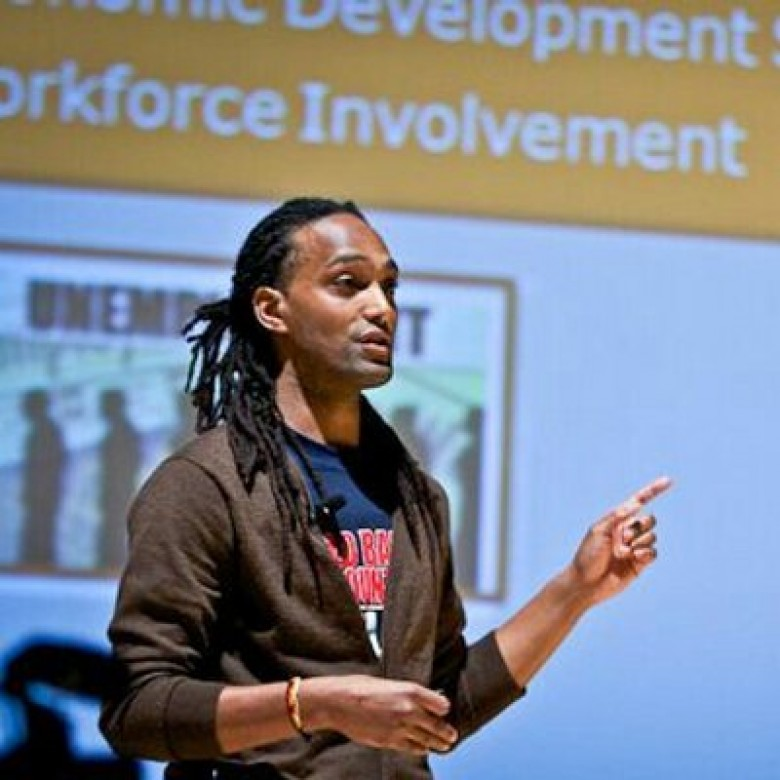Eric Walker is a compelling presence. He speaks softly, with articulation and a focused intensity that sometimes bubbles up in animated excitement. As an activist, his worldview is formed by careful analysis, an approach that often lends itself to cynicism, but Eric remains optimistic about the power of individuals.
“I sort of think of human beings as superheroes, and everybody has an origin story,” Eric tells me. His work as an environmental and social justice organizer has been about helping people translate what they inherently know from their experiences into an articulate worldview, and then operationalizing that view by developing people’s ‘superpowers.’
“I think we have a whole lot more power as individuals, and in various forms of collective action, than we ever give ourselves credit for or conceive of, and we can develop individual capacities to make that higher aspiration that we have in our worldview real.”
Eric’s origin story began in the Hudson Valley, where he grew up amid the political and economic turmoil of deindustrialization in the 1990s. He came to Buffalo twenty years ago through a state-sponsored runaway program and attended UB, where he eventually graduated with a degree in sociology and geography “after having sampled coursework in almost every department.”
His university experience gave him the opportunity to be intentional about what he was looking to do in life, and it was the beginning of what he calls “trying to be the highest form of my imagined self.” Having been politicized by the music he listened to growing up, Eric wanted to do something about structural inequalities, and he got into social justice work.
He co-founded PUSH Buffalo in 2005 and has been working on climate change and energy efficiency since 2008. Building on years of bringing equity analysis to statewide energy and climate programs, with a focus on reallocating resources toward the most impacted communities, Eric’s current role as the Director of Energy Management at Erie County’s Department of Public Works is figuring out how to reclaim the energy system so that it works for everyone.
He’s found that local governments have a lot of statutory authority to develop generation capacity, and he’s sketching out a road map to provide electricity to people as cheaply and as cleanly as possible.
The plan is to develop a community choice aggregation (CCA) model that can be used in counties across the state to generate electricity with the specific goal of reducing energy burdens, reducing social vulnerability to climate change, reducing energy insecurity, and increasing affordability for all customer classes.
The project is still in the early planning stages, but the likeliest scenario is to generate electricity with a large, grid-connected shared solar array that does remote metering and allocates electricity offsets to individual households. Done at scale, this model is a clear path toward community-owned electricity generation.
The biggest obstacle to the CCA project is convincing the risk-averse financial community to invest. “We’re working to get a large-scale project that would be bankable,” Eric says. “Assuming that it would be cheap and we could do it in a cost effective way, and I mean not spend a lot of taxpayer money to do it, I’m ready to move forward.”
It will take some time before the details of the plan are in place, but for Eric, the key to effective action is in first developing a sound understanding and then designing a strategy accordingly. “Slow or fast are subjective terms that I think falsely obscure what it means to be mindful,” he explains.
With his mindfulness, passion, and expertise, this community has some exciting things to look forward to in terms of energy democracy and ownership.
For more profiles on the people who make Buffalo shine, check out Buffalo City Lights Blog!
© 2016 Natalie Photiadis

